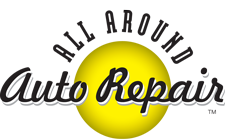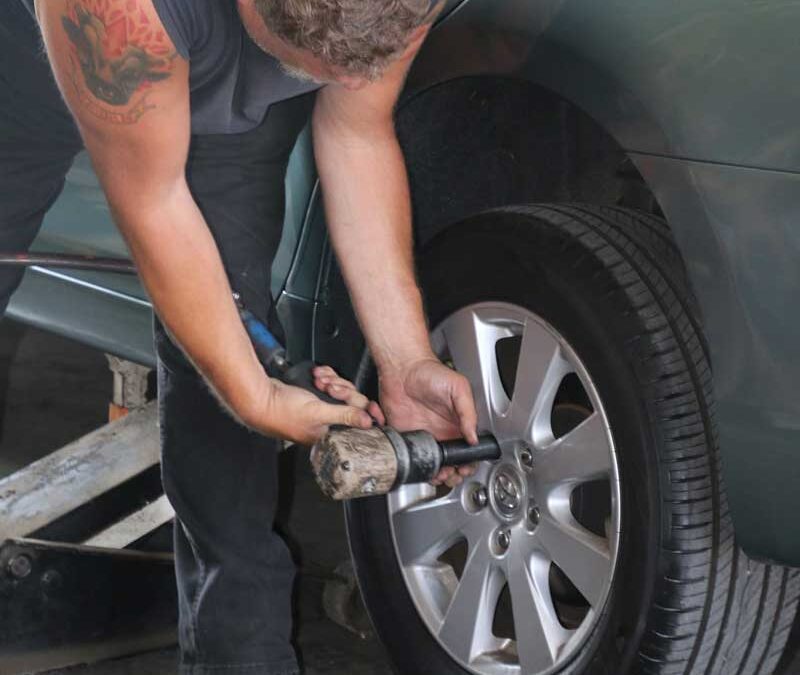Welcome to All Around Auto Repair! We’re here to talk about a crucial aspect of vehicle maintenance that often goes overlooked – wheel alignment. While it may seem like a minor concern, proper wheel alignment can have a significant impact on your vehicle’s performance, safety, and overall longevity. In this comprehensive guide, we’ll delve into the numerous benefits of wheel alignment and when you should consider getting it done.
What Is Wheel Alignment?
Wheel alignment, also known as tire alignment, refers to the adjustment of the angles of your vehicle’s wheels to ensure they are perpendicular to the ground and parallel to each other. This adjustment is crucial for maintaining optimal tire performance and vehicle handling. The primary angles adjusted during a wheel alignment are:
- Camber: This angle measures the inward or outward tilt of the wheel when viewed from the front. Proper camber alignment ensures even tire wear and balanced vehicle handling.
- Toe: Toe alignment evaluates whether the wheels are pointing inward or outward when viewed from above. Correct toe alignment helps prevent uneven tire wear and ensures straight-line stability.
- Caster: Caster angle determines the forward or backward tilt of the steering axis when viewed from the side. Proper caster alignment contributes to steering stability and returnability.
Benefits of Proper Wheel Alignment:
Now, let’s explore the benefits of maintaining proper wheel alignment for your vehicle:
1. Improved Fuel Efficiency:
One of the often overlooked benefits of wheel alignment is improved fuel efficiency. When your wheels are correctly aligned, your tires roll evenly, reducing friction and improving your vehicle’s gas mileage. Misaligned wheels can cause uneven tire wear and increased rolling resistance, which can lead to decreased fuel economy over time.
2. Prolonged Tire Life:
Proper wheel alignment helps ensure that your tires wear evenly across their tread. When your wheels are misaligned, some parts of the tires may wear faster than others, leading to premature tire replacement. By getting regular wheel alignments, you can extend the lifespan of your tires, saving you money in the long run.
3. Enhanced Vehicle Handling and Safety:
Maintaining proper wheel alignment is essential for safe and predictable vehicle handling. Misaligned wheels can cause your vehicle to pull to one side, making it challenging to maintain control. This issue becomes particularly dangerous during emergency maneuvers or in adverse weather conditions. Proper alignment ensures that your vehicle tracks straight and handles predictably, enhancing overall safety.
4. Reduced Suspension and Steering Wear:
When your wheels are out of alignment, it places additional stress on your vehicle’s suspension and steering components. Over time, this can lead to premature wear and potentially costly repairs. Proper wheel alignment helps reduce the strain on these parts, extending their lifespan and preventing the need for expensive replacements.
5. Improved Comfort and Ride Quality:
A well-aligned vehicle provides a smoother and more comfortable ride. Misaligned wheels can cause vibrations and uneven tire wear, leading to a rougher driving experience. With proper alignment, your vehicle will glide smoothly along the road, ensuring a more comfortable and enjoyable ride for you and your passengers.
When to Get a Wheel Alignment:
Now that we’ve highlighted the benefits of proper wheel alignment, let’s discuss when you should consider getting it done:
1. After Hitting Potholes or Bumps:
Hitting potholes or large bumps in the road can throw your wheel alignment out of whack. If you’ve recently encountered rough road conditions, it’s a good idea to have your alignment checked. Even minor impacts can affect your alignment over time.
2. Following Suspension or Steering Repairs:
Any work done on your vehicle’s suspension or steering system, such as replacing struts, shocks, or steering components, may necessitate a wheel alignment. This ensures that all newly installed parts are correctly aligned, promoting optimal performance and safety.
3. When Replacing Tires:
Whenever you invest in a new set of tires, it’s a perfect opportunity to get a wheel alignment. Proper alignment helps maximize the lifespan of your new tires and ensures that they wear evenly from the start.
4. Regular Maintenance Schedule:
As a general rule, it’s wise to include wheel alignment as part of your regular vehicle maintenance routine. Many experts recommend getting a wheel alignment check every 10,000 miles or at least once a year, depending on your driving habits and road conditions.
5. Signs of Misalignment:
If you notice any of the following signs while driving, it’s essential to have your wheel alignment checked promptly:
- Vehicle pulling to one side: If your vehicle consistently drifts to the left or right, even when the steering wheel is centered, it indicates a potential alignment issue.
- Uneven or rapid tire wear: Uneven wear patterns on your tires, such as excessive wear on the inner or outer edges, can be a clear indicator of misalignment.
- Steering wheel off-center: If your steering wheel isn’t straight when driving straight, it suggests an alignment problem.
- Vibrations or steering instability: Vibrations in the steering wheel or a shaky steering feel can result from alignment issues and should not be ignored.
Proper wheel alignment is more than just a minor maintenance task; it’s a crucial aspect of vehicle safety and performance. By investing in regular wheel alignments and addressing alignment issues promptly, you can enjoy benefits such as improved fuel efficiency, prolonged tire life, enhanced handling, and overall safer driving. Make wheel alignment a part of your vehicle maintenance routine, and your car will thank you with better performance and a longer, trouble-free lifespan. Visit All Around Auto Repair for professional wheel alignment services and experience the difference it can make for your vehicle.





